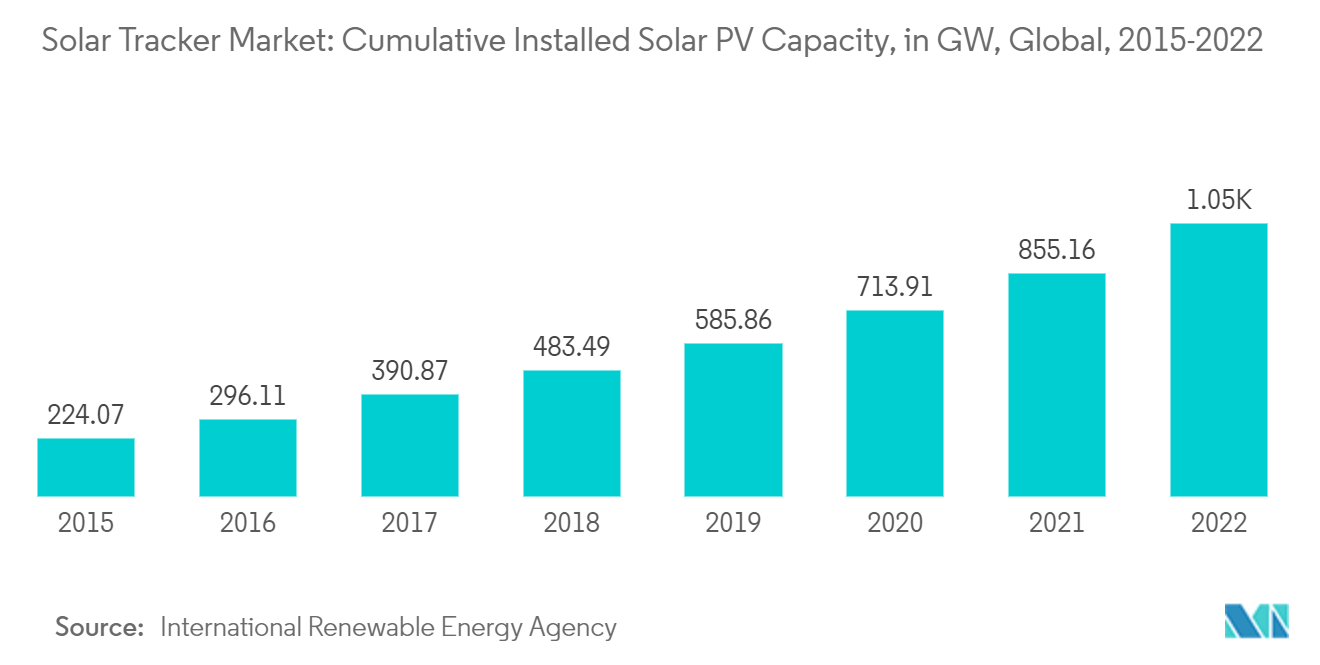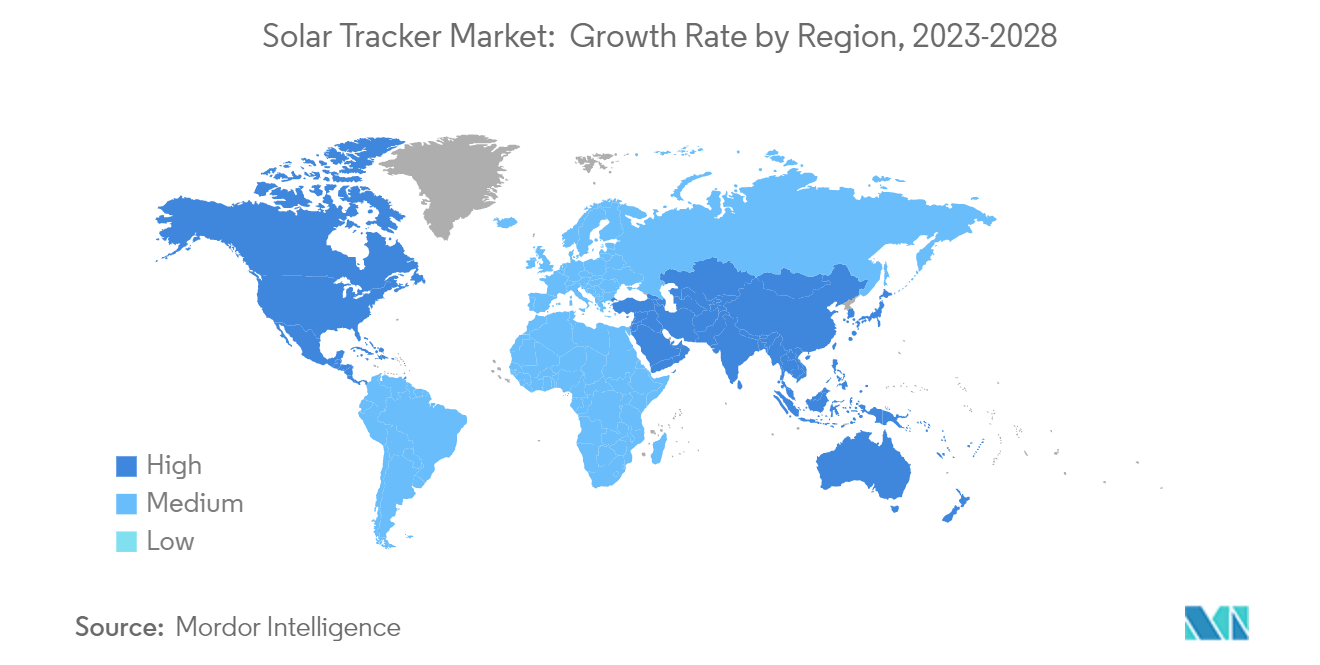Market Trends of Solar Tracker Industry
Single Axis Solar Trackers to Dominate the Market
- A solar tracker enhances the production capacity of the solar panel system by aligning the solar panel with the direction of sunlight. The solar tracker alters the alignment of the photovoltaic (PV) panel so that the sunlight falls perpendicularly on the panel and gives maximum power output. However, they are less effective when they move farther toward the northern regions because the variance of the solar angle is higher between the summer and winter seasons in locations far from the equator.
- The single-axis solar tracker is 50% more costly than a fixed PV panel setup but provides an extra 25-35% surge in capacity. Its simple design offers the highest density of PV panel placement per square and includes a shorter payback time.
- Currently, horizontal single-axis trackers (HSAT) are the leading choice among trackers since they can deliver 20-30% more energy without the added cost and complexities of dual-axis tracking systems. In addition, the decline in single-axis tracking system cost is increasing the popularity of SATs, which in turn, hinders the growth of the dual-axis trackers market.
- The single-axis tracker is 50% more costly than a fixed photovoltaic panel setup but provides an extra 25-35% surge in energy yield. Single-axis solar trackers' simple design offers the highest density of photovoltaic panel placement per square area and contains a shorter payback time. At the same time, dual-axis trackers provide an extra 10% capacity enhancement but cost an extra 100% of fixed PV panel setup.
- The installed capacity of solar photovoltaic (PV) projects is growing significantly over the last decade due to increasing investments in the renewable energy industry supported by favorable government policies and ambitious renewable energy targets set by several countries. According to International Renewable Energy Agency, the cumulative global installed solar PV capacity grew by 22.4%, i.e., from 855.16 GW in 2021 to 1,046.61 GW in 2022.
- Furthermore, governments and energy companies face a challenge to increase the power capacity for current and future projects. With single-axis solar trackers, a capacity surge of 20-30% can be very beneficial. It, in turn, is expected to create significant opportunities for the companies involved in single-axis solar tracking system manufacturing during the forecast period.
- Thus, owing to the above points, the single-axis solar tracker is expected to dominate the market in the forecast period.

North America to Dominate the Market
- North America witnessed significant growth in installed solar energy capacity in recent years, mainly supported by increasing investments and favorable government policies, leading to a rise in demand for solar trackers in the region.
- In the North American region, the United States is a major shareholder in the demand for solar trackers, followed by Canada and Mexico.
- The United States is expected to maintain its dominance in the solar tracker market during the forecast period, owing to the increasing focus of the country's government on renewable energy and supportive government policies.
- The United States is one of the major markets for solar trackers around the globe, with a majority of the demand coming from states like California, Arizona, Nevada, Texas, Florida, North Carolina, etc.
- With the increasing emphasis on solar efficiency and power generation, solar tracking systems are actively used in the United States. Since the panels of a solar PV system collect solar radiation more efficiently when the sun's rays are perpendicular to the panel, deploying a solar tracker enhances electricity generation.
- The use of single-axis tracking in the US utility PV market has grown steadily over the past decade. At the end of last year, more than 60% of all United States utility-scale PV systems used single-axis tracking. On the other hand, dual-axis solar tracking was used by only 48 projects with a combined capacity of around 1.16 GW.
- The United States contains a large share of the total dual-axis solar tracker deployed globally, as these systems increased efficiency by 30-40% compared to fixed-tilt trackers. It led to an increase in the demand for these systems in recent years. Hence, the dual-axis tracker system market is expected to increase about the increased efficiency and greater ROI. However, the O&M cost associated with the dual-axis solar tracker system is expected to act as a restraining factor to the market.
- Therefore, factors such as upcoming solar PV tracking systems projects, supportive government policies, and efforts to reduce reliance on fossil fuel-based power are expected to drive the solar tracker market in the region.

